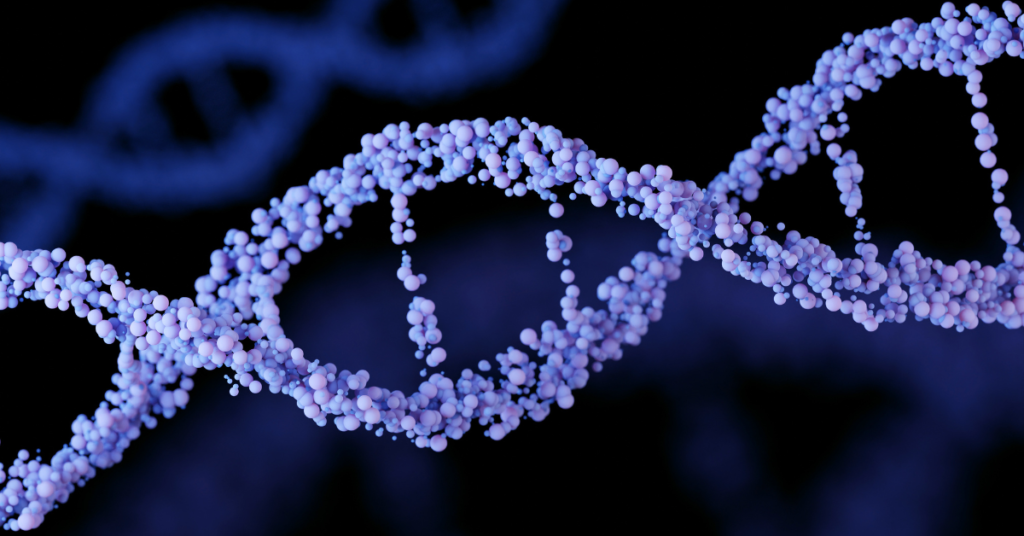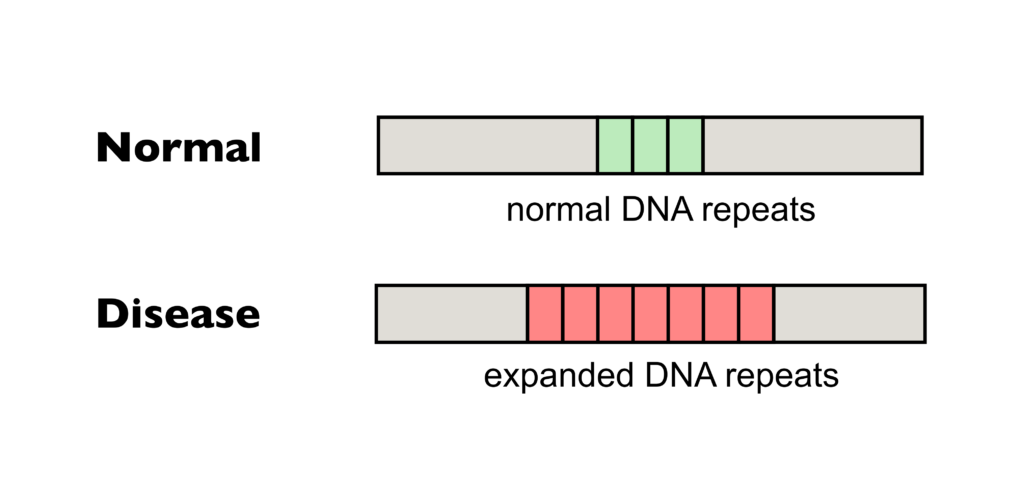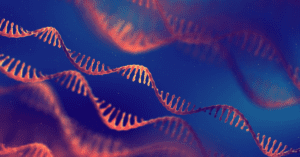
In a nutshell: somatic expansions are expansions of repeat DNA sequences that accumulate in cells over an individual’s lifetime.
A special kind of mutation: repeat expansion mutations
Some genes naturally contain repeat sequences in the DNA. For the most part, these DNA repeats are relatively short and do not cause disease. However, when the DNA repeats expand above a certain size, they can lead to diseases. The expansion of DNA repeats is called repeat expansion mutation (Fig 1).

Fig 1 – DNA repeats can expand and cause diseases
There are a number of known expansion mutation diseases, such as Huntington’s disease (HD), Spinocerebellar ataxia type 1 (SCA1), and Fragile X syndrome (FXS). These are genetic diseases, meaning that children can inherit the disease from their parents. This is because the expansion mutation in the parent’s DNA is passed on to the child. Interestingly, the inherited DNA repeats can get longer in cells over a person’s lifetime. This is called “somatic expansion”.
How do somatic expansions occur?
In the day-to-day operations of the cell, the DNA double helix gets unzipped and scanned by cellular machineries to read the instructions to make various proteins for cellular functions. At times, the DNA also receives maintenance work by the DNA damage repair or DNA proofreading machinery. These cellular processes are incredibly accurate; yet, mistakes can happen, and they accumulate over one’s lifetime. When the mistakes happen at the sites of DNA repeats, extra repeats can get inserted and the repeats can become longer. Because these mistakes happen infrequently, some cells end up having longer DNA repeats while the other stay the same. This way, the repeat sizes might differ in different cells or tissues in the adult body (Fig 2).

Fig 2 – Somatic expansions cause DNA repeats to expand to different lengths in different cells and tissues
Why are somatic expansions important?
Longer DNA repeats often result in earlier age of disease onset and a more progressive disease. While longer repeats can be inherited, they can also come from somatic expansions as discussed above. What makes somatic expansions important is that they can worsen the disease symptoms over a patients’ lifetime. Indeed, studies in HD have shown that longer repeats in brain tissues results in more serious symptoms.
Researcher also discovered that if you take samples from different tissues – for example from blood and from brain cells – you may get different repeat length. Indeed, blood sample screening, a less invasive method than to collect brain sample, is widely employed as a diagnostic test to measure the number of repeats in patients. We now know that the number of repeats in blood may not represent the number of repeats in brain cells, the most affected cells in expansion mutation diseases.
The field is now looking into suppressing somatic expansions as a therapeutic approach. Better understanding of somatic expansions, how they occur, and which cell types causes the disease symptoms holds the key to a more accurate diagnosis and future therapeutics.
If you would like to learn more about somatic expansion, take a look at these resources by HDBuzz and Tocris.
Snapshot Written by: Sophia Leung
Edited by: Dr. Larissa Nitschke

Snapshot: What is Myoclonus?
Myoclonus is a neurological clinical sign marked by sudden, quick, and involuntary muscle contractions or jerks. These contractions can happen in one muscle group or in several muscle groups at Read More…

Snapshot: What is Aspiration?
Aspiration refers to the entry of food, liquid, saliva, or other materials into the airway instead of the esophagus during swallowing. This can occur when the coordination of muscles involved Read More…

Snapshot: What is Alternative Splicing?
To function properly, our body depends on many essential processes that are moderated by molecules created within us. Creating these crucial molecules, also called proteins, involves multiple steps and precursor Read More…










